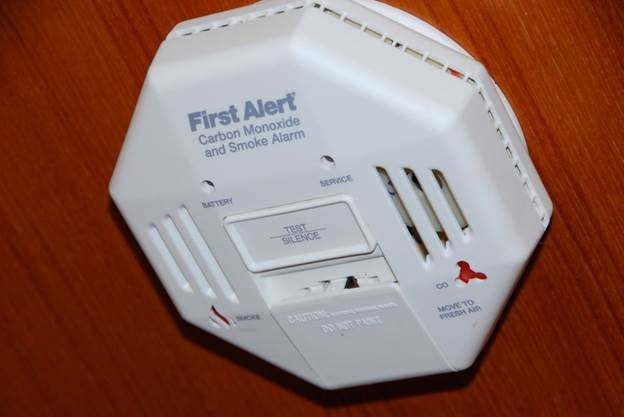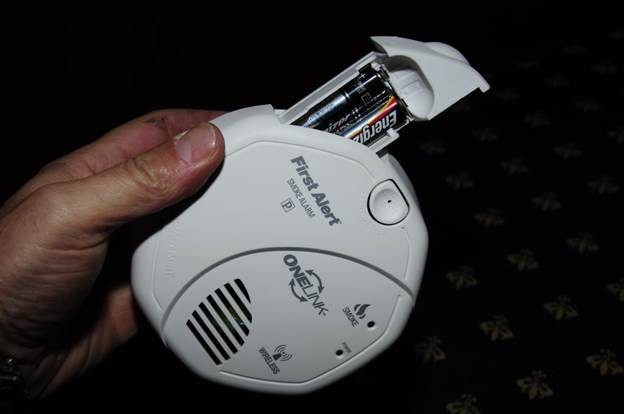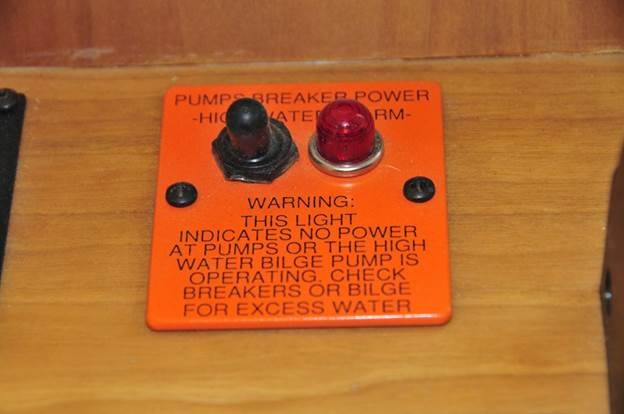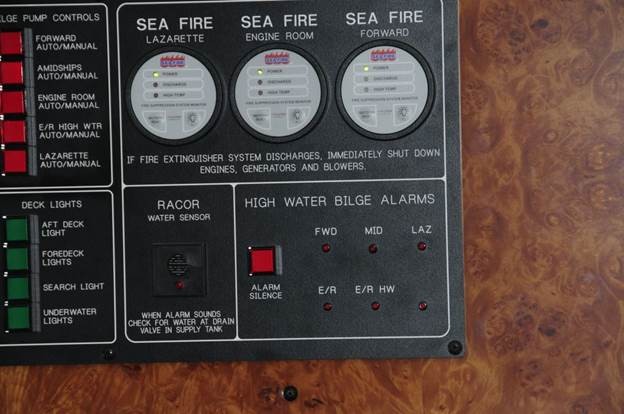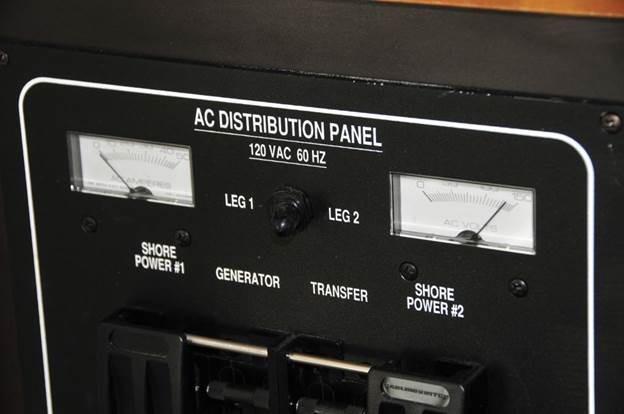Text and Photos By Steve D’Antonio
Copyright May 2014
While some alarms afford users a simple convenience, a warning regarding a nearly full holding tank for instance, others are outright necessities. Most smoke alarms used aboard smaller vessels are of the household variety, which means they rely on batteries, which must of course be replaced regularly.
In last month’s column I discussed alarm systems that typically reside on the engine, low oil pressure, high coolant temperature and exhaust temperature. This month I’ll discuss other vessel alarm or notifications systems that are capable of alerting the crew to important onboard events.
Fire and Water
There are two scenarios that rightfully strike fear into the heart of any vessel operator, fire and flooding. I don’t have to tell the reader that these emergency events need tobe taken seriously. What’s worth discussing, however, is how and when they are discovered. Because fire can spread so rapidly and because the smoke alone,even from a seemingly insignificant fire, can be deadly, it’s worth doing whatever is necessary to ensure early detection. I previously wrote an SDMC Marine Systems Excellence column dedicated to the subject of smoke detectors; if you’d like to refresh your memory please follow this link. Suffice it to say, you never can detect a fire too quickly or too soon.
CO alarms have been a requirement for ABYC compliance for several years, while smoke alarms remain conspicuous in their absence from the standard. Regardless, every vessel with an enclosed space should be equipped with both. This combination unit monitors both.
Related to fire is gas, LP, CNG or gasoline. If your vessel utilizes any of these fuels, it’s important to monitor for the presence or accumulation of these potentially explosive vapors. Explosive fume monitoring systems are readily available and they are relatively inexpensive. They should be wired in such a way as to ensure continuous monitoring (more on the subject of 24 hour power supplies below). After all, a leaking LP gas line or gasoline fuel filter neither knows nor cares whether you are aboard or not.
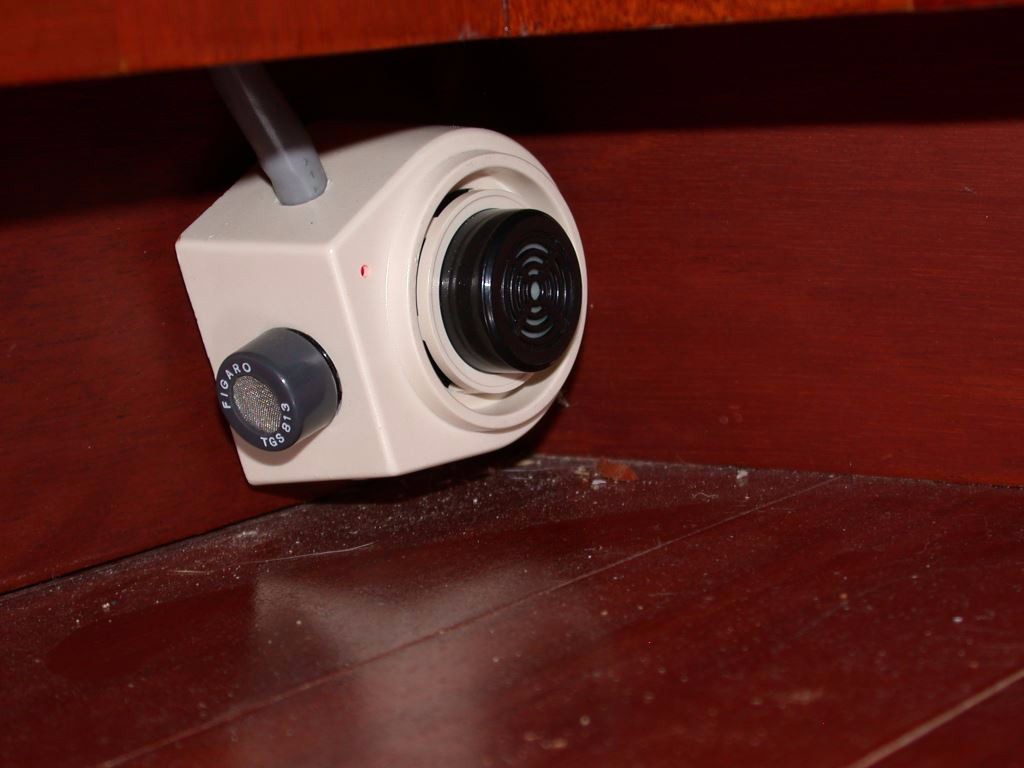
LP gas alarms include remotely mounted sensors. These often live a difficult life, under stoves and in kick wells (the latter in the one shown here), where they can be damaged by spilled liquids or food as well as feet. Most have a replicable sensor element, the screened disc labeled “figaro”, shown on the left. If your vesselis equipped with this type of alarm, keep a spare element or two aboard.
If such a leak exists, you need to know as soon as possible, as soon as you set foot aboard if it occurs while the vessel is unattended and, before you energize any electrical equipment.
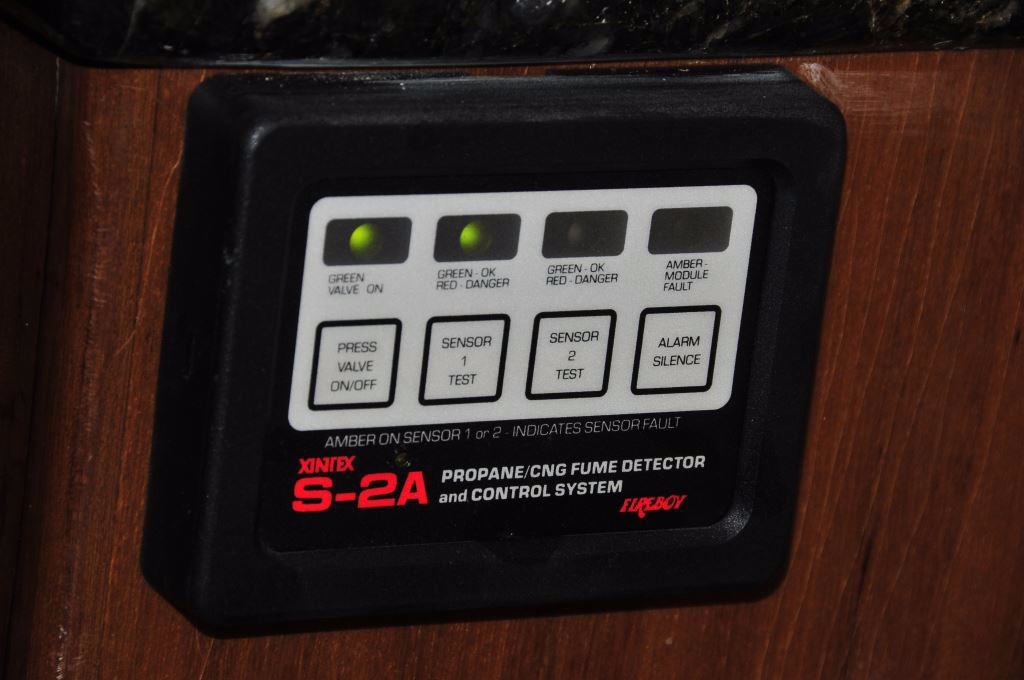
A combination LP gas solenoid remote control and dual sensor alarm panel. Systems of this sort will automatically turn off the gas supply in the event of an alarm. They should be tested monthly.
Flooding of course carries its own set of concerns and it too is best detected as early as possible. High water alarms are, therefore, an essential component aboard any vessel that’s equipped with a bilge pump. This alarm should be energized by what’s referred to in the industry as a 24-hour bus, which simply means it’s always on regardless of the position of the battery switches or whether power is available to the remainder of the house loads, engines or any other equipment. In fact, this is the same power supply condition that should exist for the bilge pumps themselves, you should be able to leave the boat with all primary DC circuits de-energized secure in the knowledge that the bilge pumps and high water alarm will operate.
Automatic bilge pump and alarm power supplies should never be controlled by an ordinary circuit breaker installed on the vessels main circuit breaker panel. One approach calls for the use of a separate bus whose supply utilizes a circuit breaker that is protected from inadvertently being turned off (a fuse may also be used for this supply; however, a circuit breaker is preferred). Each pump must be protected by its own fuse or circuit breaker, in the case of the latter these should beprotected using a gate device, to, once again, prevent them from being turned off unintentionally. Some proprietary high water alarms utilize an internal 9 volt (in some cases two) transistor battery. With this arrangement, there’s no concern for the high water alarm failing to sound even if the vessel’s own batteries are dead, provided the batteries are replaced regularly.
The high water alarm annunciator must, by necessity, be impossible to ignore and it should be audible both inthe cabin and on deck, and the alarm should be impossible to mute or silence (areal possibility as some units use a simple toggle switch with ON and MUTE positions; if so equipped, these switches should be covered).
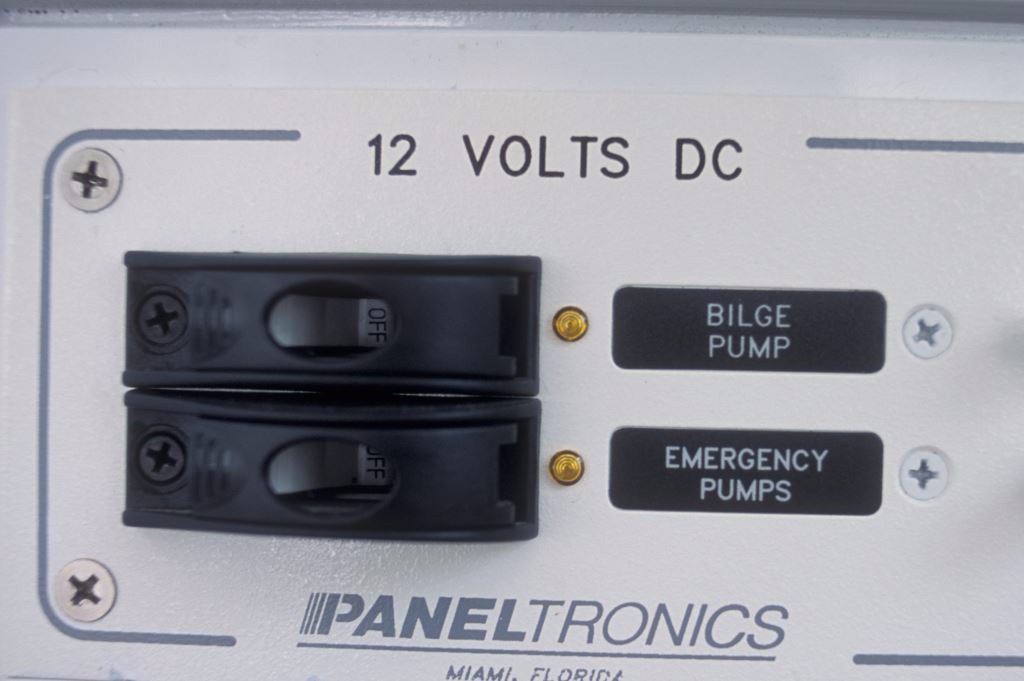
As important as bilge pumps are, it’s simply too risky to assume their circuit breakers will remain in the ON position at all times. Covers like these, from Blue SeaSystems, prevent critical circuit breakers from being turned off inadvertently.
The on deck annunciator will alert those nearby to your vessel’s distress situation in the event you are not aboard. This “outside” signal approach can be taken one step further with the addition of a wireless alerting system, which can be programmed to send you an SMS text message in the event the high water or other alarm sounds, these are available as a component of a larger vessel monitoring systems, or a stand-alone model. Today, for the low cost, it’s difficult to argue against this option. Unattended dockside sinkings are not uncommon. If vessel owners could be alerted early on in the flooding they could also be entirely avoidable.
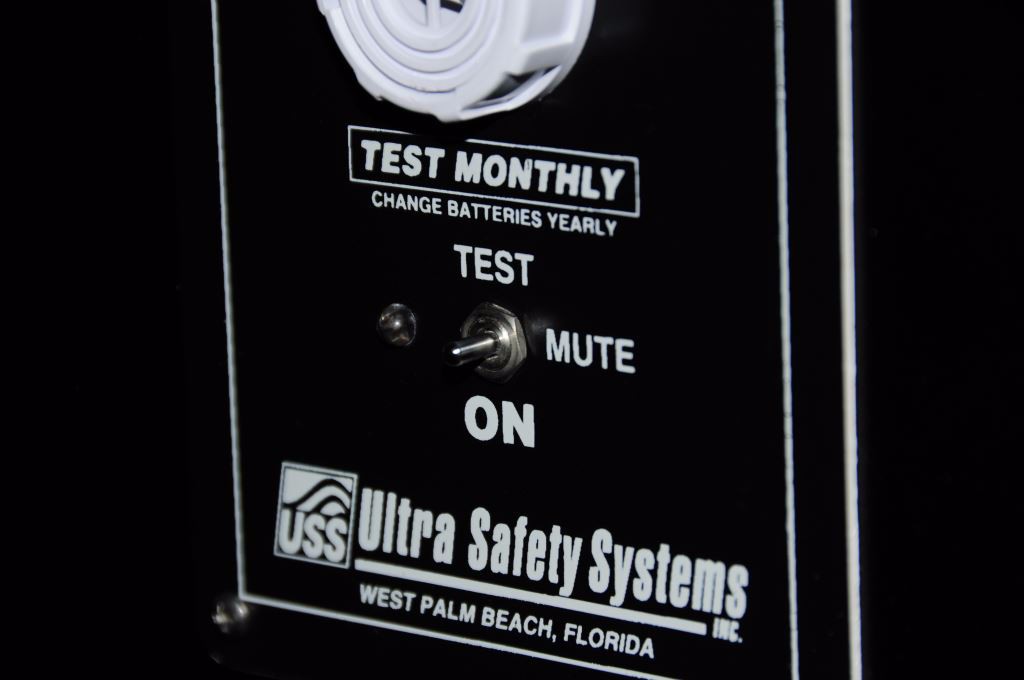
High water alarms should be considered an integral part of any bilge pump system. These too can be inadvertently turned off, this one, as well as many others encountered by the author, was found in the mute position. These should be inspected and tested regularly.
I’m frequently surprised by the inexplicably high level at which high water alarm float switches are installed. I routinely encounter switches installed eight, twelve or more inches above the primary bilge pump float switch. Depending on the size of the vessel and its bilges, the difference in elevation between these two switches can represent a great deal of flood water. The alarm float switch should be installed only slightly above the standard bilge pump float switch, just high enough to prevent nuisance signals. Any higher simply represents more flood water that will accumulate before the alarm sounds.
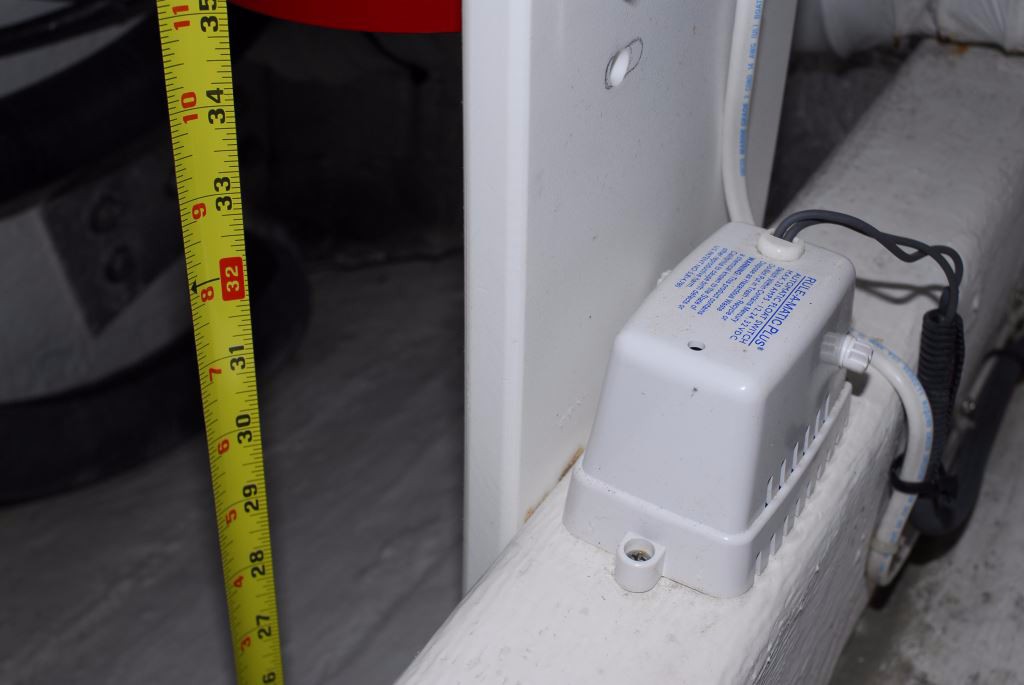
The placement of high water alarm floats or switches is of critical importance. The majority are placed too high, including the one shown here. A switch placed any higher than necessary simply allows more water to accumulate before sounding thealarm.
High water alarms must be conspicuously located and they must also include an audible as well as a visual component. A pilot light alone will not suffice.
Another type of water alarm worthy of mention involves the vessel’s fuel system. Water in fuel sensors, sometimes referred to as WIFs, and their associated alarms are a veritable prerequisite for cruising vessels. During a recent conversation with a client he relayed to me how his new engines suffered several thousand dollars worth of damage as a result of water contamination.
While not as common as they should be, water in fuel, sometimes referred to as WIF, sensors and alarms provide vessel operators with an early warning regarding fuel contamination, long before water can reach critical fuel injection components.
During the installation of a teak deck the fuel fill caps were not properly secured, allowing rainwater (approximately 50 gallons!) to enter the tanks. During the next sea trial water overwhelmed the primary and secondary fuel filters, ultimately reaching the high pressure fuel injection system. The ensuring damage necessitated replacement of all fuel injectors on both engines. Had the vessel been equipped with water in fuel sensors in the primary fuel filters it’s safe tosay that the engines could have been shut down well before suffering damage.
Few contaminants can be as detrimental to a fuel system as water. Not only does water not burn like fuel, it supports biological life, like that shown here at the interface between fuel and water, which in turn clogs filters while producing corrosive by products.
Sensors should be installed in all primary filters, including tandem designs, as well as generators. It’s important that WIF sensor alarms be located at both lower and upper helm stations and they must be audible, even over wind or entertainment system noise. Some annunciators simply use an indicator light, which may be easily overlooked.
Voltage and Refrigeration
Because the role played by virtually every vessel’s battery bank is critical, it’s important to maintain aclose watch on its voltage. A simple volt or amp-hour meter will of coursealert the user to a condition that requires attention. However, what happensif this low voltage condition occurs in the middle of the night? While manybattery bank monitoring systems can be programmed to sound an alarm in theevent a low voltage threshold is reached, most that I encounter aren’t programmed and as such this valuable feature goes untapped.
By the same token, what happens if your vessel’s shore power is interrupted? Depending upon the vessel this maybe a non-event or it may be significant, with potential health side-effects. If refrigeration equipment is running, regardless of whether it’s AC or DC, it will stop functioning. In the DC case the batteries will carry the system forsome time, however, they will eventually become depleted, at which point therefrigeration as well as the bilge pumps and high water alarms will also ceaseto function, not to mention incurring potential damage to the batteries themselves.
If the refrigeration is powered via shore power, it will, again, stop functioning. In either case, if power isrestored it’s possible for frozen food to thaw, and then insidiously re-freeze. You may not know this disaster in the making has occured until thepotentially tainted food is unpackaged for use or worse, consumed.
Once again, if you are aboard you can clearly deal with this issue, however, if the vessel is unattended then there’s little hope for intervention unless an alarm that can be clearly heard outside the vessel is installed. Battery operated AC power loss alarms are available and worthy of consideration if you are concerned about power loss aboard your vessel while you are away or asleep. To reiterate, this is especially important for refrigeration and freezer systems that are used to store meat, if it defrosts and is then refrozen, consumers of these foodstuffs could become ill.
I was carrying out an inspection aboard a vessel a few years ago and encountered, in the vessel’s freezer, asmall plastic cup that had been half filled with water, and frozen. Resting atop the ice was a penny. The owner explained that this was his low tech refrigeration failure alert system. If the penny ever found its way to thebottom of the cup, it would be clear that the freezer had, at some point, thawed, which would almost certainly cause the food stored within to spoil.
The poor man’s refrigeration failure alarm. While it won’t prevent food from thawing, it will serve as a clear indication this has occurred.
I routinely find myself on the bridges of vessels when an alarm sounds; in so many cases it is unclear just what the alarm is for. It can be a frustrating experience, particularly when vessels are new to owners or delivery crews. In a recent case, an alarm sounded and everyone on the bridge looked at each other, wondering if anyone knew what the alarm was signaling. There were several possibilities, including engine and generator overheat, exhaust temperature, stabilizer hydraulic fluid temperature, water maker and low voltage, as well as a host of possible navigation and communication sources.
A light associated with an audible alarm provides a clear indication of the alarm’s origin, available feature for bridges that may be equipped with dozens of potential alarm sources.
This all too common scenario drives home the need for organization of a vessels alarm system, when an alarm sound sit should be immediately clear what it’s telling the crew, and it should be clear to anyone operating the vessel. Visual signals that are associated with audible alarms can be very useful in deciphering the nature of the alert.
Shore power monitors are unsung heroes; they can alert users to a loss of power when it otherwise may be unnoticed, in the case of inverters that automatically come online or if the vessel is unattended.
Monitoring and alarms are often relegated to back burner status in vessel design and set up; however, with thepopularity of monitoring systems on the rise, this trend is slowly changing. The good news is monitoring the most important systems is neither difficult nor expensive.
Onboard Alarms Part II Sidebar:
Smoke detector technology, ionization or photoelectric, how does it work and which is best?
Smoke detector technology falls into two possible categories, ionization and photoelectric. Most early smoke detectors were of the ionization variety, their detection ability relies on a small amount of radioactive material located between two electrically charged plates, which ionizes the air, which in turn causes current to flow. When smoke enters the chamber, the flow of ions is interrupted, which reduces current flow, triggering the alarm. Ionization detection is most sensitive for fast growing, flaming and less smoky fires. This technology has received a lot of bad press of late, much of it well deserved, many experts believe it to be inferior to photoelectric sensors. A client, and the owner of a smoke alarm service company that maintains thousands upon thousands of smoke alarms, has strong feelings regarding ionization smoke detector technology, saying, “…quite simply, ionization smoke alarms are potential killers, in that they do not respond in most real house fire situations. I couldn’t tell you how many houses we have been to where there has been a smoldering fire, house full of smoke and not one alarm has actually gone off. In every case, the alarms have been ionization.”
Photoelectric detection works very differently, however, it’s also very simple, a light source within the detector is aimed away from a light sensor. When smoke enters the chamber it reflects the light onto the sensor, which triggers the alarm. Photoelectric smoke detection is more sensitive to smoky, smoldering fires.
The US testing firm and publication “Consumer Reports” recommends that both technologies be used in the ideal, single detector. That may be a tall order to get that and all the features you want. If you must choose one, therefore, photoelectric is preferred as it’s more sensitive to the more common type of fire, especially aboard a boat.
For more information on the services provided by Steve D’Antonio Marine Consulting, Inc. please e mail Steve at info@stevedmarineconsulting.com
or call 804-776-0981

